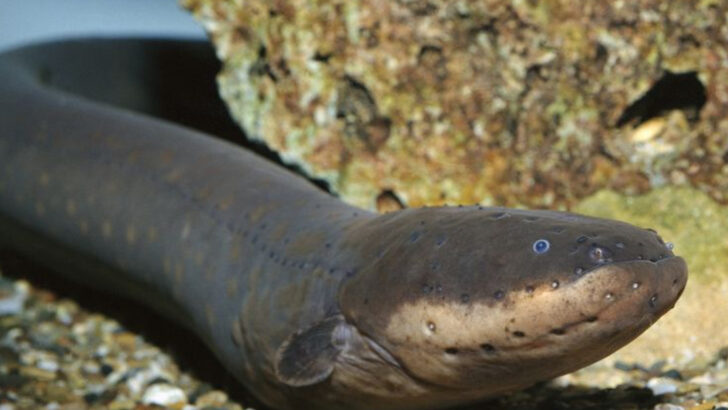Some fish are small enough to fit in a goldfish bowl. Others could tip a boat.
Freshwater rivers and lakes hide true giants—massive fish that defy expectations. From monstrous catfish lurking in murky depths to ancient sturgeon longer than a grown man, these underwater behemoths are the stuff of legend. Some were caught by lucky anglers, while others remained unseen for centuries.
What makes these fish so massive? Some have been growing for decades, slipping through nets and evading capture. Others belong to species that have existed since the time of the dinosaurs. Either way, they prove that freshwater isn’t just home to tiny minnows—it’s ruled by giants.
Get ready to meet the biggest freshwater fish ever recorded. Some are strange, some are terrifying, and all of them are record-breakers!
Mekong Giant Catfish
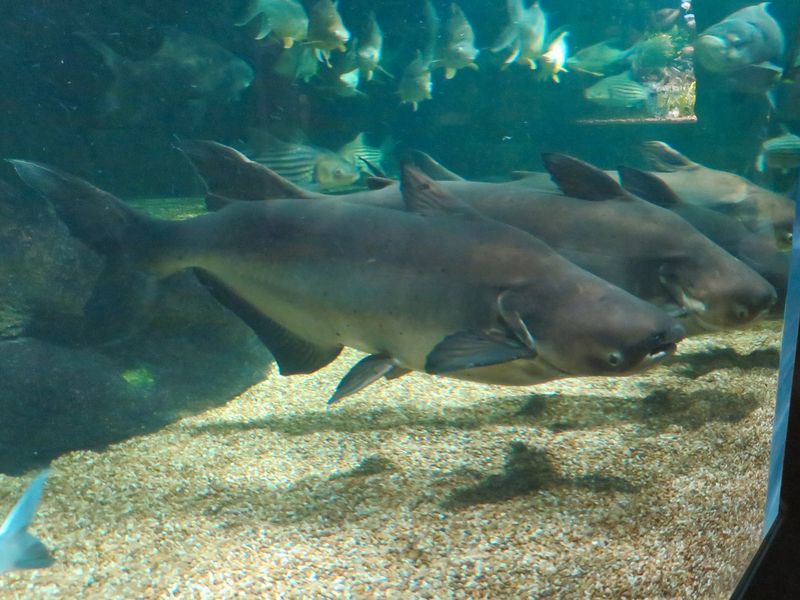
The Mekong Giant Catfish holds the record as one of the largest freshwater fish, with some specimens reaching up to 660 pounds. Found in the turbid currents of the Mekong River, these fish are celebrated not only for their size but also for their elusive nature.
Such giants are increasingly rare due to habitat destruction and overfishing, making conservation efforts critical. Their diet primarily consists of algae and plant matter, which signifies their importance in maintaining the river’s ecological balance.
Efforts to breed and release these catfish are ongoing, aiming to preserve their presence in Southeast Asia’s aquatic landscape.
Beluga Sturgeon

The Beluga Sturgeon is a true river titan, often weighing over 2,000 pounds and stretching more than 20 feet in length. These ancient fish inhabit the Caspian and Black Sea basins, playing a crucial role in their ecosystems.
Renowned for producing the highly prized beluga caviar, they face significant threats from poaching and habitat loss. Conservationists emphasize the need for protective measures to ensure their survival.
Their existence dates back to the time of the dinosaurs, rendering them living fossils. This fascinating lineage adds to their allure and underscores their importance.
Arapaima
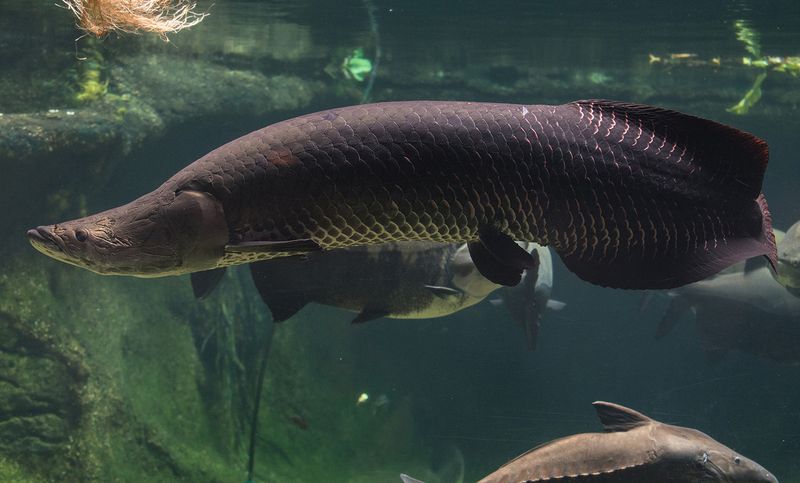
Arapaima are among the largest freshwater fish found in the Amazon Basin, often reaching 10 feet in length and weighing up to 485 pounds. Known for their striking red markings, they are apex predators in their habitat.
These fish have a unique ability to breathe air, allowing them to survive in oxygen-poor waters. This adaptation aids in their predatory lifestyle and resilience in challenging environments.
Local indigenous communities revere the Arapaima, and sustainable fishing practices are being promoted to support both their conservation and the community’s livelihoods.
Wels Catfish
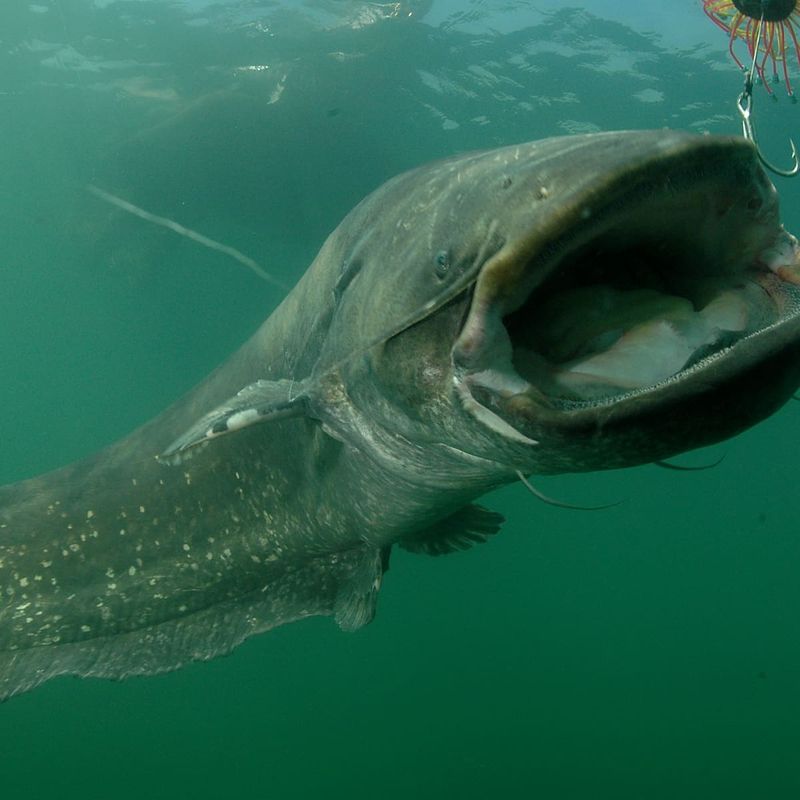
The Wels Catfish, native to European waters, is one of the continent’s largest freshwater fish, sometimes exceeding 9 feet and 300 pounds. These nocturnal hunters are known for their voracious appetites and adaptability.
They thrive in a variety of environments, from deep rivers to large lakes, utilizing their keen sense of smell and taste to locate prey. This adaptability has enabled their spread across Europe.
Anglers often target Wels Catfish for sport due to their size and strength, contributing to an increased interest in sustainable fishing practices to protect their populations.
Piraiba Catfish
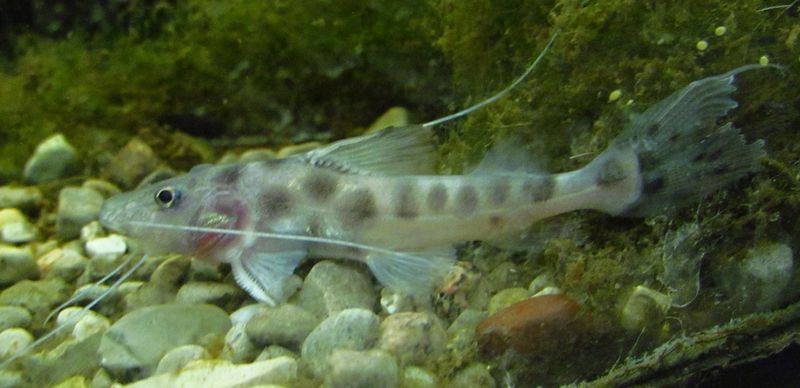
Piraiba Catfish are formidable giants of the Amazon and Orinoco river basins, sometimes reaching 12 feet and weighing over 400 pounds. Notorious for their strength, they are a prized catch among anglers.
These catfish are opportunistic predators, feeding on smaller fish and occasionally small mammals that venture too close to the water’s edge. Their presence is a testament to the biodiversity of the Amazon.
Efforts to maintain healthy populations focus on reducing overfishing and habitat degradation, preserving the ecological balance of the river systems they inhabit.
Alligator Gar
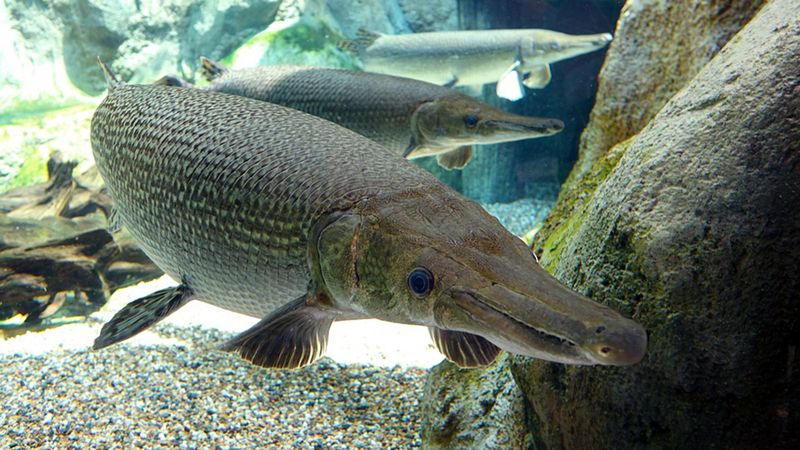
The Alligator Gar, with its prehistoric appearance and fearsome reputation, can weigh up to 350 pounds and measure 10 feet in length. Found primarily in the southern United States, these fish are one of the largest North American freshwater species.
Known for their dual rows of sharp teeth and torpedo-like bodies, they are formidable hunters. Their ability to breathe both air and water gives them a survival advantage in diverse environments.
Conservationists highlight the importance of these ancient fish in maintaining healthy aquatic ecosystems, advocating for measures to protect their habitats.
Nile Perch
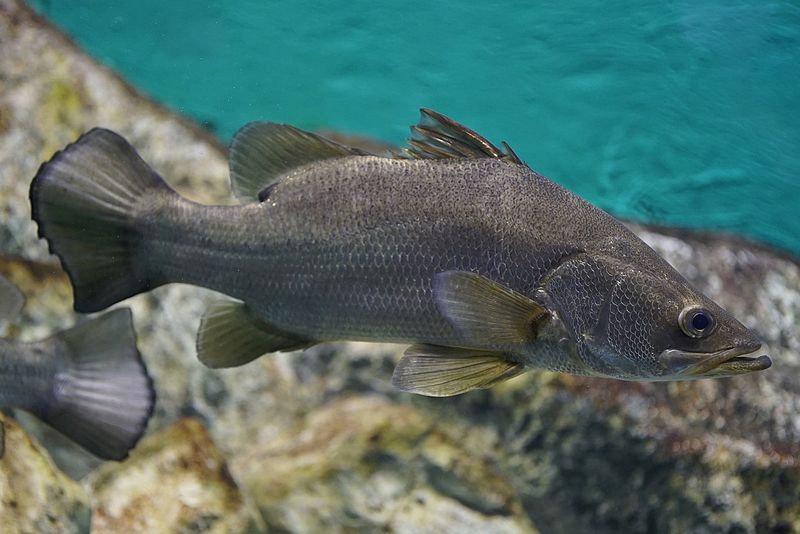
Nile Perch, native to African rivers and lakes, can grow over 6 feet long and weigh up to 440 pounds. Their introduction to Lake Victoria significantly altered the aquatic ecosystem, leading to the decline of native species.
These fish are voracious predators, consuming a wide array of smaller fish, which has made them both a boon and a bane for local fisheries.
Efforts to balance their impact include promoting responsible fishing practices and restocking native species. The Nile Perch remains both a commercial asset and an ecological challenge.
Murray Cod

The Murray Cod is Australia’s largest native freshwater fish, reaching nearly 6 feet and 250 pounds. Found in the Murray-Darling Basin, these fish are vital to the local aquatic ecosystem.
Renowned for their longevity, some individuals live for over 50 years, which makes them particularly vulnerable to environmental changes and human activities.
Conservation efforts focus on habitat restoration and sustainable fishing to ensure their survival. The Murray Cod holds cultural significance and is celebrated as a symbol of Australia’s natural heritage.
Goonch Catfish
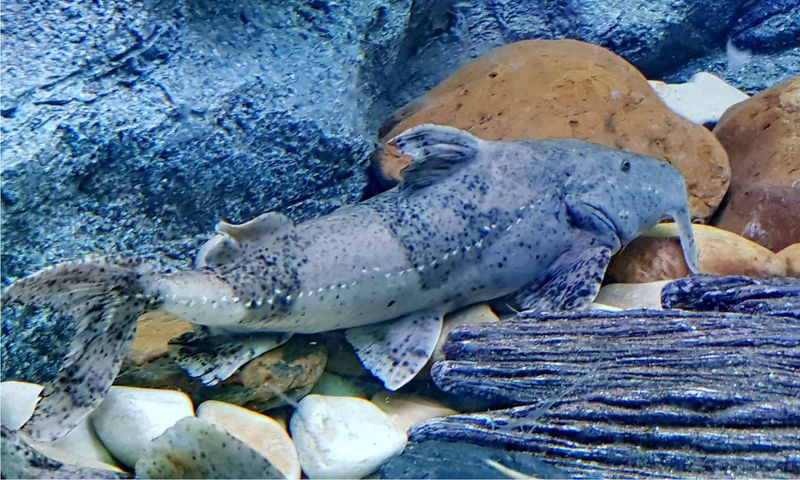
The Goonch Catfish, residing in the fast-flowing rivers of India and Nepal, can exceed 6 feet and weigh over 200 pounds. Known for their immense strength, they have a mysterious aura in local folklore.
These catfish are apex predators, feeding on a variety of aquatic life and occasionally surprising larger prey. Their strength and elusive nature captivate anglers.
Conservation efforts in the region aim to protect these fish from habitat destruction and overfishing, ensuring their place in the ecosystem and local culture.
Chinese Paddlefish
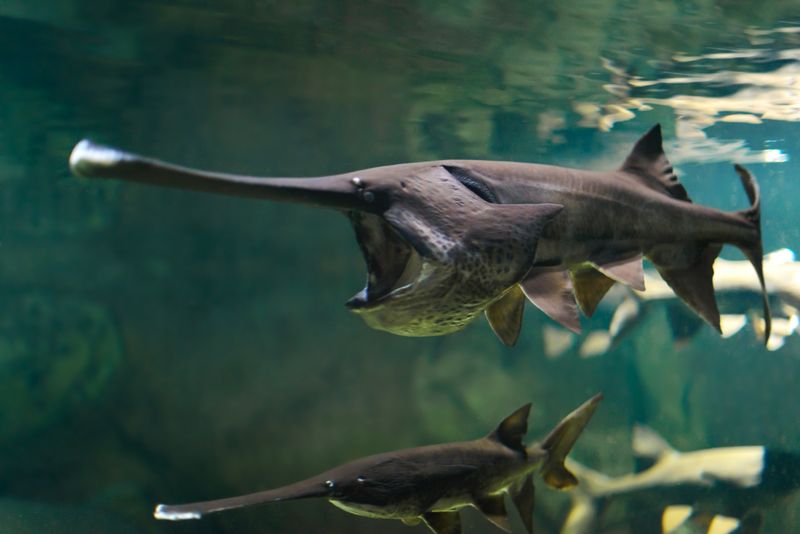
The Chinese Paddlefish, once a common sight in the Yangtze River, could grow over 23 feet long, making it one of the largest freshwater fish. Unfortunately, it’s now considered critically endangered.
Industrial pollution, dam construction, and overfishing have decimated their populations. Efforts to locate and conserve any remaining individuals are ongoing, reflecting the urgency of their plight.
These fish were integral to the Yangtze’s biodiversity, and their decline is a stark reminder of the impact of human activities on aquatic ecosystems. Protecting their habitat remains a conservation priority.
Arapaima Gigas
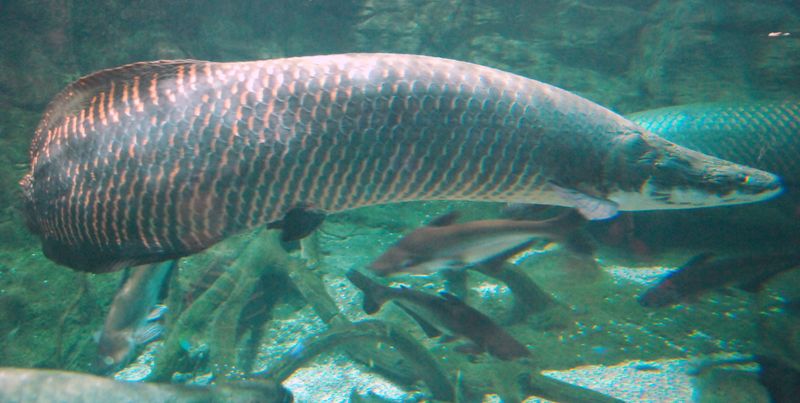
Often confused with the Arapaima, the Arapaima Gigas is the largest species, reaching up to 15 feet and 485 pounds. Their sheer size and striking appearance make them iconic within the Amazon Basin.
This species’ ability to surface for air distinguishes it from other fish, enabling survival in low-oxygen waters. Their presence is crucial for maintaining ecological balance, as they control populations of smaller fish.
Conservationists work closely with local communities to ensure sustainable practices, aiming to safeguard both the species and the livelihoods that depend on them.
Kaluga Sturgeon
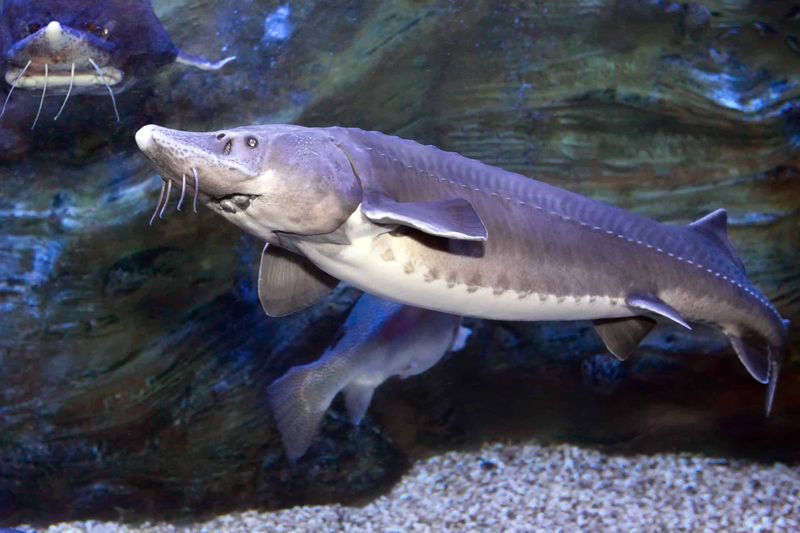
The Kaluga Sturgeon, inhabiting the Amur River, rivals the size of its Beluga relative, exceeding 18 feet and 2,200 pounds. This giant is among the largest sturgeon species, known for its power and longevity.
The Kaluga’s eggs are highly valued, contributing to overfishing and declining populations. Conservation initiatives focus on habitat protection and anti-poaching measures.
These sturgeon are critical to their ecosystem, acting as both predator and prey. Protecting the Kaluga ensures the preservation of the river’s complex food web, highlighting its ecological importance.
Taimen

Taimen are legendary in Siberia and Mongolia, with some individuals exceeding 6 feet and 200 pounds. Known as “river wolves,” they are the largest salmonids and are apex predators in their cold environments.
These fish are known for their aggressive hunting style and extraordinary strength, often targeting even small mammals. Their presence is vital for indicating healthy river ecosystems.
Conservation efforts focus on habitat preservation and combating illegal fishing. The Taimen’s role in their ecosystem is irreplaceable, providing a unique insight into riverine health.
Redtail Catfish
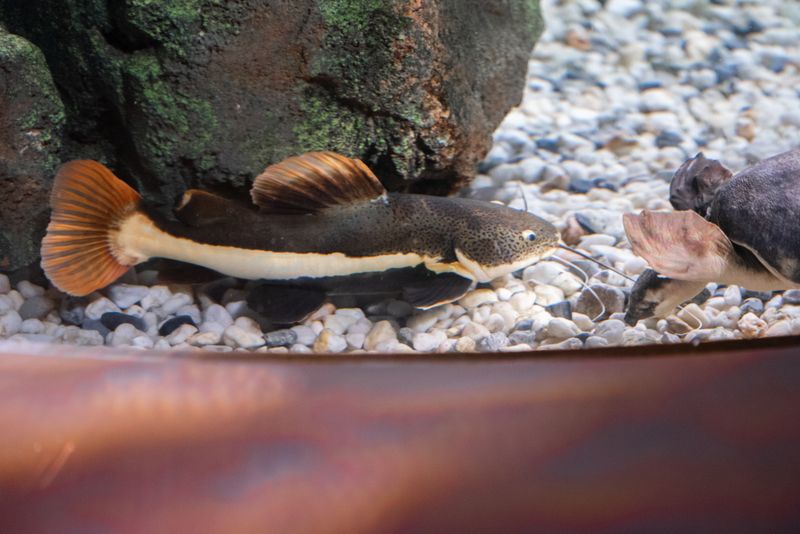
The Redtail Catfish, native to South American rivers, can grow over 5 feet and weigh more than 180 pounds. Their striking red caudal fins and patterned bodies make them popular among aquarium enthusiasts.
In the wild, these catfish are opportunistic feeders, consuming a variety of aquatic organisms. Their adaptability to different environments contributes to their widespread presence.
Efforts to manage their populations focus on preventing overfishing and habitat loss, ensuring that these beautiful fish continue to thrive in their natural habitats.
Electric Eel

Despite its name, the Electric Eel is more closely related to catfish than true eels, reaching lengths of 8 feet and weights of up to 44 pounds. Found in the Amazon and Orinoco basins, they are remarkable for their ability to generate electricity.
This adaptation aids in navigation, communication, and hunting, making them unique among freshwater fish. Their electrogenic abilities provide insights into bioelectric phenomena.
Conservationists focus on preserving their habitats and educating the public about their ecological roles, emphasizing the need for sustainable interactions with these extraordinary creatures.
White Sturgeon
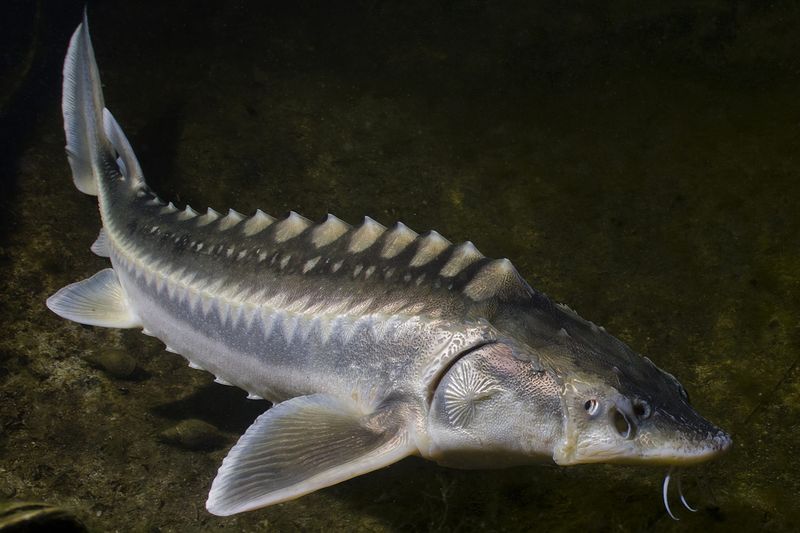
The White Sturgeon is North America’s largest freshwater fish, with some individuals reaching over 20 feet and 1,500 pounds. Found primarily in the Pacific Northwest, these ancient fish are a vital part of their ecosystems.
They have a prehistoric lineage, with fossil records dating back millions of years. This connection to the past enhances their significance and fascination.
Conservation efforts stress the importance of habitat preservation and the regulation of fishing practices, ensuring the survival of these majestic giants for future generations to admire.
Zambezi Shark
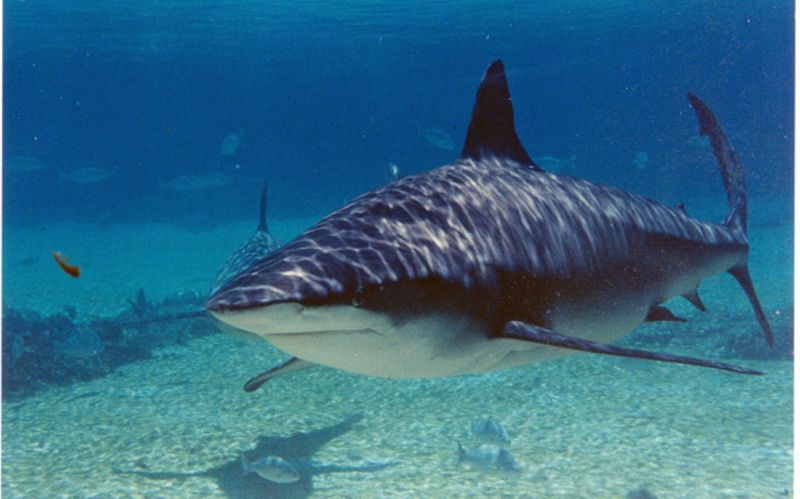
Also known as the Bull Shark, the Zambezi Shark can inhabit both salt and freshwater, with individuals growing over 11 feet and weighing up to 500 pounds. Their presence in rivers like the Zambezi highlights their adaptability.
Unlike typical freshwater fish, these sharks can regulate their internal salt levels, allowing them to traverse diverse environments. Their reputation as apex predators is well-earned, with a diet that includes fish and mammals.
Efforts to study and protect these sharks focus on understanding their migratory patterns, aiming to balance their ecological roles with human activities.
Giant Barb
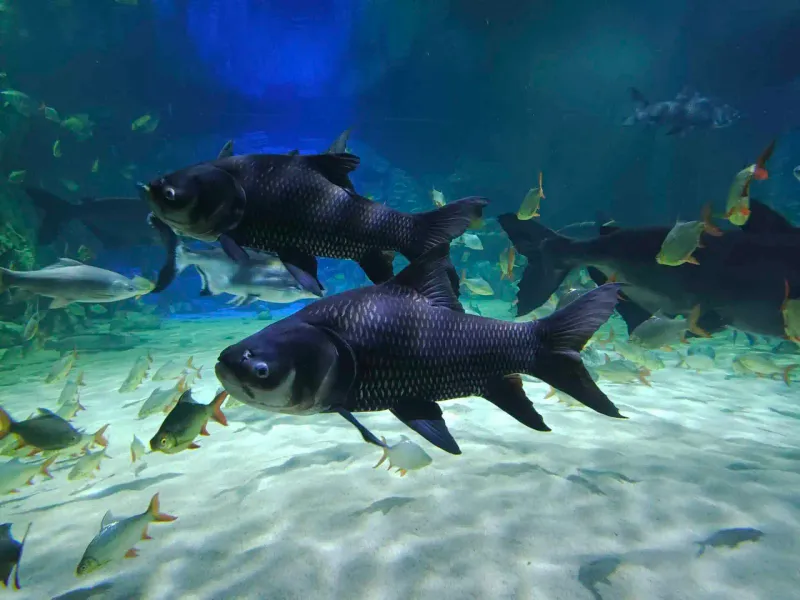
The Giant Barb, native to Southeast Asia’s Mekong and Chao Phraya rivers, can grow over 10 feet and 660 pounds, making it the world’s largest carp species. These gentle giants are herbivores, primarily consuming aquatic plants.
Their significant size and cultural importance in local folklore contribute to their revered status among river communities. However, they face threats from overfishing and habitat destruction.
Conservationists advocate for protective measures and community engagement to ensure the Giant Barb’s survival, emphasizing its role in maintaining healthy river ecosystems.

